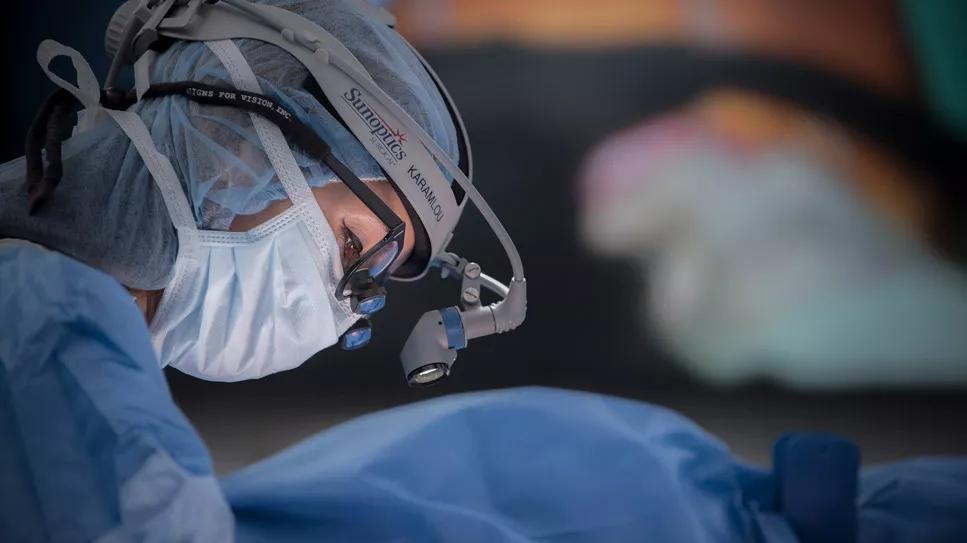Expert panel advises a two-tier structure for surgical centers

Experts from 15 medical societies have issued the first multidisciplinary, evidence-based recommendations for pediatric cardiac surgery for congenital heart disease (CHD) in the U.S. Designed to promote a high level of care across centers performing such procedures, the proposed metrics span 14 domains and encompass structure, process and outcomes.
Advertisement
Cleveland Clinic is a non-profit academic medical center. Advertising on our site helps support our mission. We do not endorse non-Cleveland Clinic products or services. Policy
The panel’s key recommendation is creation of a two-tier structure for surgical centers.
First-tier Comprehensive Care Centers have:
Second-tier Essential Care Centers have:
Among additional criteria endorsed by the panel for both Comprehensive and Essential Care Centers are:
Co-published in The Journal of Thoracic and Cardiovascular Surgery, World Journal for Pediatric and Congenital Heart Surgery, and The Annals of Thoracic Surgery, the consensus document is endorsed by 15 medical societies, including STS, the American Academy of Pediatrics (AAP), the American College of Cardiology and the American Heart Association. The initiative was led by the Congenital Heart Surgeons’ Society.
Advertisement
The impetus for the consensus document was the lack of up-to-date guidance about pediatric heart surgery. The most recent recommendations were published more than 20 years ago. In addition, analysis of data from STS by the panel revealed a wide variation in outcomes of pediatric CHD surgery in the U.S. and a fragmented system of care for the more than 40,000 patients who undergo the procedures annually.
According to STS, more than 150 centers across the country perform pediatric CHD surgery, but nearly half (44%) have an annual case volume less than 150. Recent data from STS on 76,000 congenital heart surgeries show that lower volumes are associated with higher operative mortality, particularly for high-complexity procedures. The centralized rather than regional model the panel supports is meant to help address these shortcomings.
“This important consensus document developed by a multidisciplinary group of cardiac providers across the country describes the background rationale and methodology to create these new recommendations,” says panel member Bradley S. Marino, MD, MBA, Executive co-Director of the Pediatric and Adult Congenital Heart Center at Cleveland Clinic Children’s. “These recommendations encompass structure, process and outcome metrics across 14 critical domains in pediatric cardiac care.”
Adds panel member Tara Karamlou, MD, MSc, a Cleveland Clinic pediatric and congenital heart surgeon and Director of the Cardiovascular Outcomes Research and Registries Center: “These recommendations are not meant to be punitive or prescriptive. They are based on a careful analysis of the current literature. Our goal is to build a better future for patients with CHD by considering what can be improved along the entire arc of their care — not just the immediate surgical interval.”
Advertisement
The panel believes building collaborative relationships between Comprehensive and Essential Care Centers is critical to optimizing both inpatient care and follow-up. That includes bidirectional information sharing about processes and cases, transfer of cases when needed, and transparent sharing of outcomes data.
Says Dr. Karamlou, “If small-volume centers are not doing so, we encourage them to partner with quaternary care centers that fall into the Comprehensive Care Center rubric. That is already happening in Cleveland Clinic’s coverage area. It’s a way to ensure that limited resources are used appropriately and that every child has access to the highest quality care available.”
The two-tier system is similar to the systems implemented by the Adult Congenital Heart Association for delivery of adult CHD care and by AAP for complex general pediatric surgery, she adds.
“Our panel recommendation is not meant for credentialing, however,” she says. “Rather, it represents what we believe is the best paradigm for delivery of care to maximize performance and outcomes and mitigate lack of access for patients.”
The panel encourages study of subsequent care delivery and outcomes across the country to assess implications of their recommendations. While the pediatric population was the focus of the current consensus document, the panel suggests that a separate initiative focus on the growing adult congenital surgical population.
“It’s important to view quality of care for CHD through the lens of the lifetimes of patients, not just with a narrow focus on individual surgical events,” says Dr. Karamlou. “We also need to start thinking about best practices from a population health perspective, and that’s why a multidisciplinary panel was so important for this initiative.”
Advertisement
Adds Dr. Marino, “With the appropriate collaborations between Comprehensive and Essential Care Centers, all of our patients in every community across the country will have the opportunity to receive the best surgical and longitudinal care to allow them to not only survive but thrive.”
Advertisement
Advertisement

Experts advise thorough assessment of right ventricle and reinforcement of tricuspid valve

Reproducible technique uses native recipient tissue, avoiding risks of complex baffles

A reliable and reproducible alternative to conventional reimplantation and coronary unroofing

Program will support family-centered congenital heart disease care and staff educational opportunities

Case provides proof of concept, prevents need for future heart transplant

Pre and post-surgical CEEG in infants undergoing congenital heart surgery offers the potential for minimizing long-term neurodevelopmental injury

Science advisory examines challenges, ethical considerations and future directions

Updated guidance and a call to action